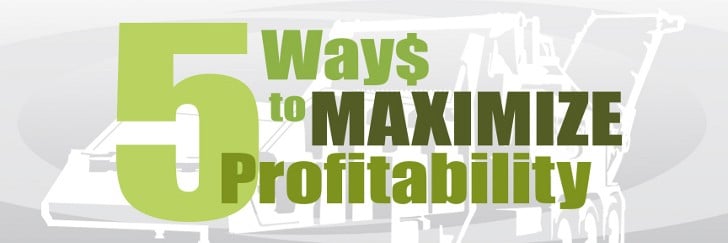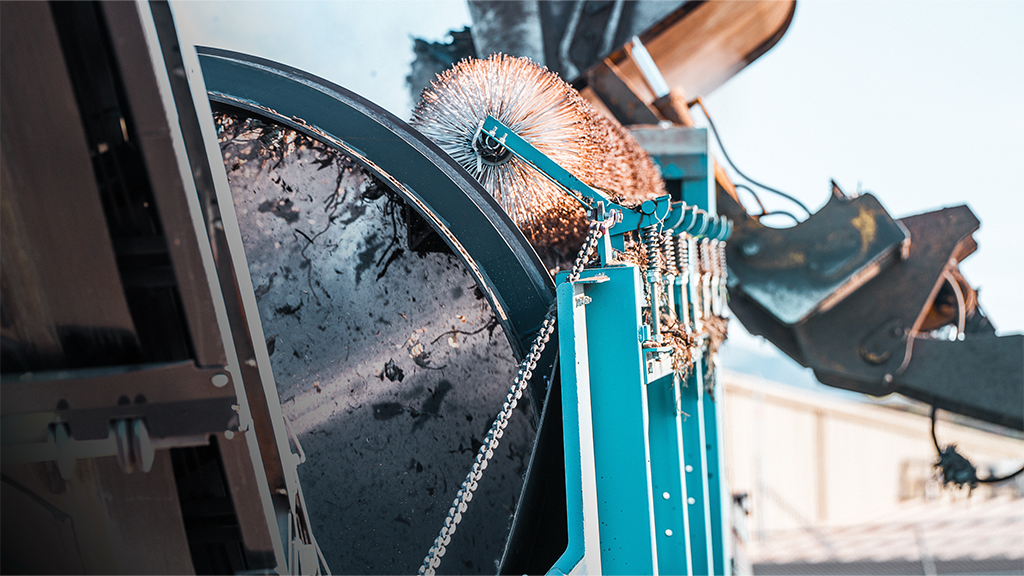
The challenges for wood fibre markets have grown along with the opportunities. Many of the challenges are in fact a sign of growth. One example is the increased competition for wood fibre in many regions. As a recycler, the first step in moving past these challenges is to equip yourself with the right knowledge. Rotochopper sales representatives start by considering the factors below every time they tailor a grinding solution to a customer's needs.
Most current recycling markets grew out of challenges of one kind or another. Coloured mulch was the response to shortages of bark and other premium fibres. Compost is growing as a result of landfill bans on yard waste and increased demand for organic soil additives.
It will be exciting to see what new fibre markets will emerge in the next few years in response to the challenges we see currently.
One thing is certain: the grinding companies that focus on the right factors, like the issues outlined below, will be the ones growing along with evolving fibre markets.
1. Consider Electric
If your grinding operation meets some simple criteria, an electric grinder will almost always offer a lower cost per ton or cubic yard of finished product, compared to a diesel grinder. This criteria includes: if your material handling process is fixed; if you have access to three-phase power; and if you don't need mobility.
When it comes to mobility, even if you need to grind at multiple locations, an electric grinder with a mobility package (trailer mount, electrical quick connects, etc.) can offer significant savings. Recyclers should make a point to learn more about the cost savings of electric grinders.
2. Minimize Handling
Multiple machines and processes add costs, sometimes in very surprising ways. Count how many times you handle your feedstock and finished product. Factor in a dollar per ton each time you do and see how much it costs in your current operation. Strive to make the process as seamless as possible. Each additional step in the process cuts into your profit margins.
3. Match the Grinder to the Core, not the Fringe
Don't look for a grinder to handle the exceptions. Choose a grinder that matches the core of your business. If your business is grinding wood, don't look for a machine that can handle the small percentage of miscellaneous trash you get in the mix, like rubber tires, carpet rolls, and so on. If 99 percent of your grinding operation is focused on small diameter round wood, choose a machine that will most efficiently process your material - not one that will handle the occasional large diameter stump.
Choose a grinder that works with your existing process and equipment - unless you plan to upgrade your existing equipment. Over-sizing the grinder to match the fringe materials drives up the costs of every ton or cubic yard you produce. An empty grinder with the engine or motor running means you're grinding air. Consider alternative strategies for processing fringe materials to keep capital costs and operating expenses down, such as sorting and stockpiling, hiring contract grinders (perhaps once per year) or using loader attachments to pre-process "oddball" raw materials. Rotochopper offers grinding solutions from 127 to 1,050 horsepower, but the biggest is not always the best solution.
4. Focus on Cost per Ton or Cubic Yard
One hundred tons of production an hour sounds great, but if your machine is down ten hours a week for hard-facing, cleaning or maintenance, all that production gain is lost. More consistent production will represent higher output in the long run and, most importantly, a lower cost per ton or cubic yard.
For example, in a high abrasion application like shingle recycling, you may be able to push more material through the grinder by increasing infeed speeds, adjusting engine RPM, and so on.
But the higher wear costs and increased downtime cancel out those gains.
5. Flexibility is Essential for Sustainable Growth
The opportunities for recycling have never been better. Markets for wood fibre, recycled asphalt shingles (RAS), and other products are growing and changing. Today, Rotochopper customers are producing coloured mulch, natural mulch, hot mix asphalt supplement, fuel pellets, compost, boiler fuel, animal bedding and several other engineered fibres.
The ability to handle multiple feed stocks, create a variety of end products and adapt to changing markets is essential for capitalizing on these changing opportunities.
You want to be able to choose a fibre market because it offers the greatest opportunities, rather than having your grinder "choose" a fibre market for you because it is unable to meet certain fibre specifications.
This article was submitted by Rotochopper, and was originally published in the March 2018 edition of Recycling Product News, Volume 26, Number 2.



